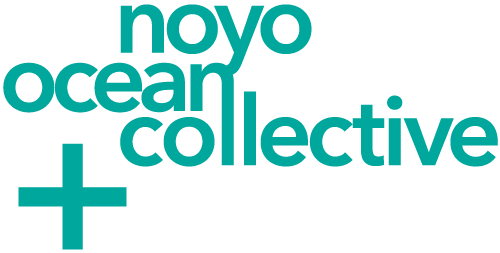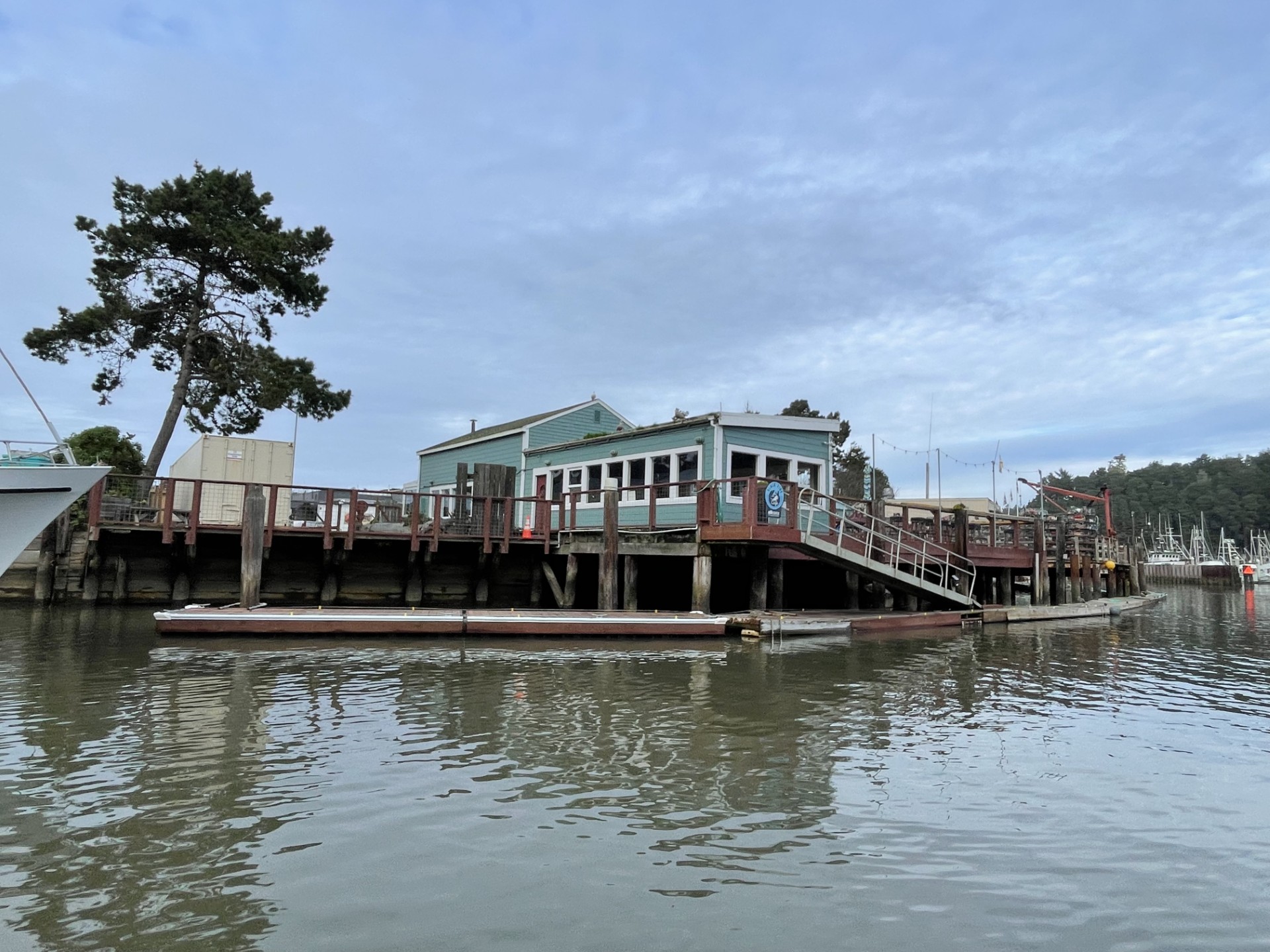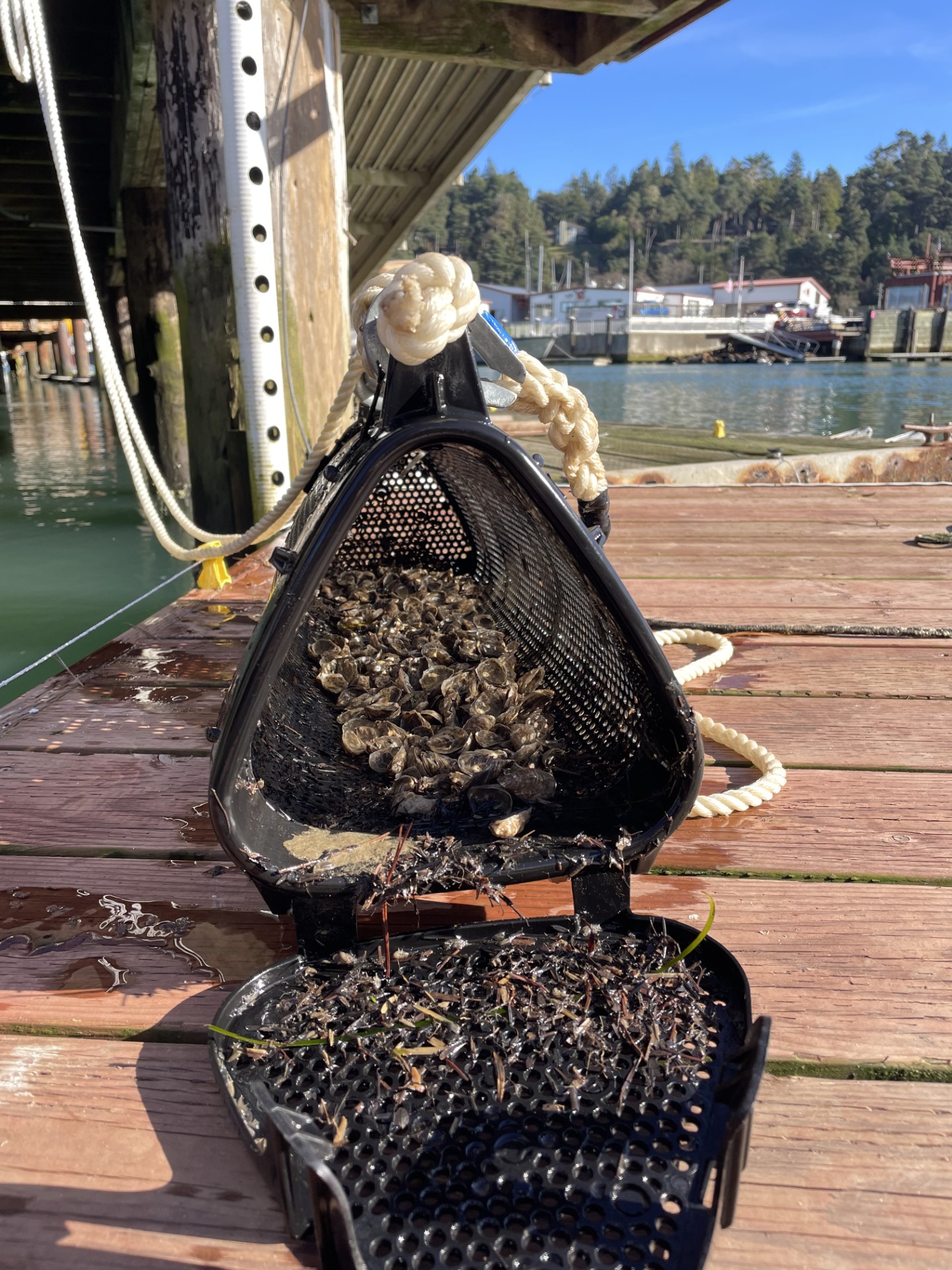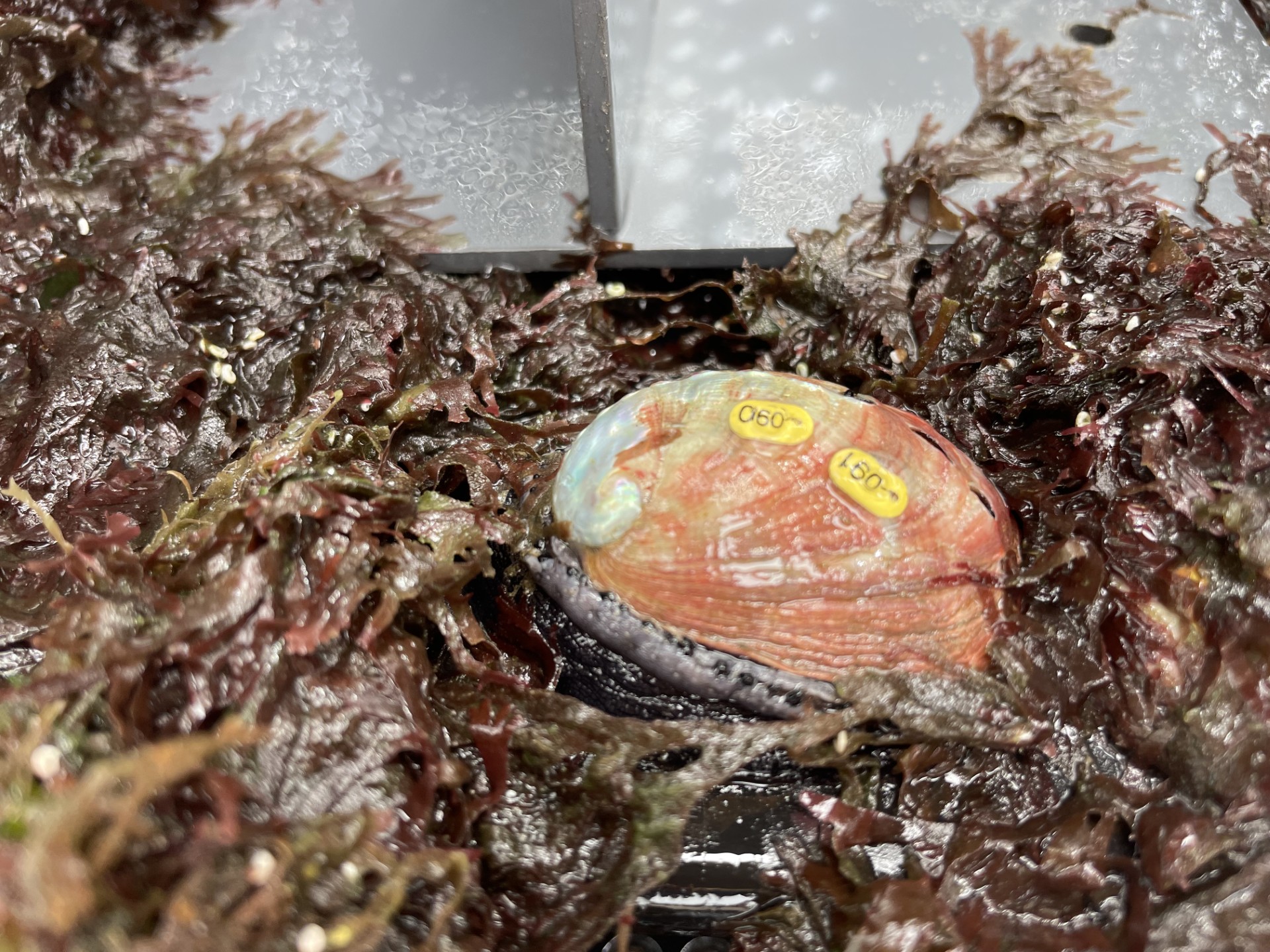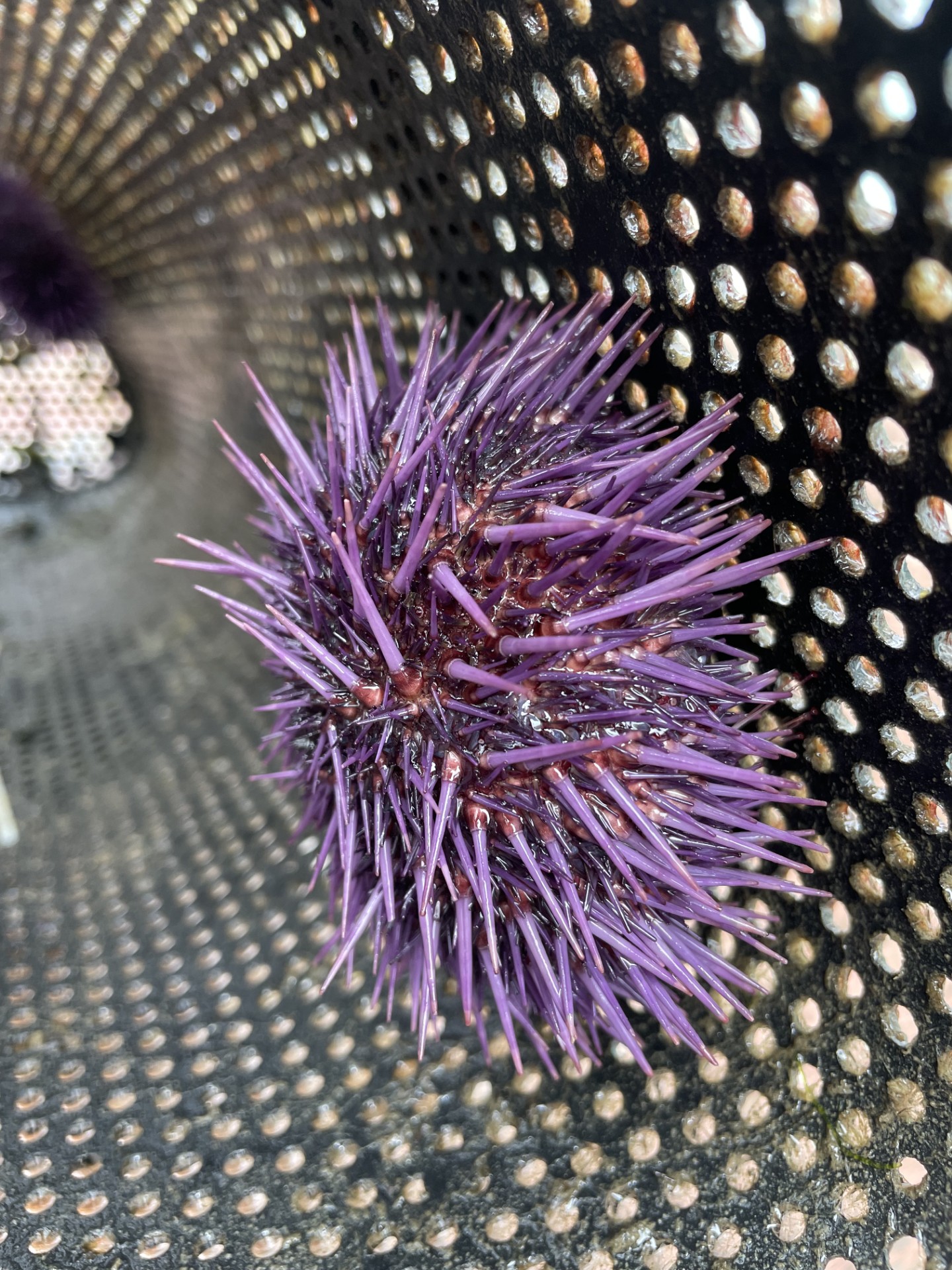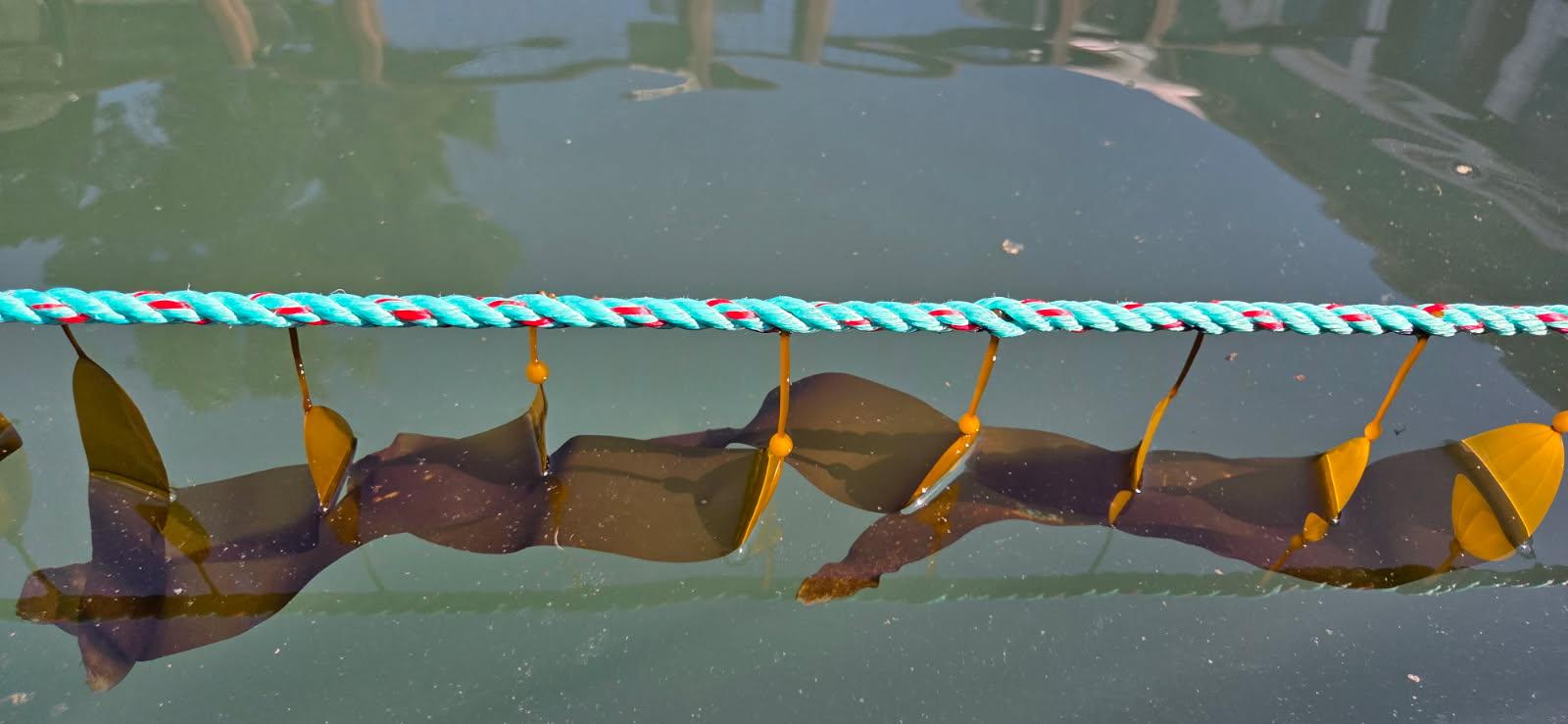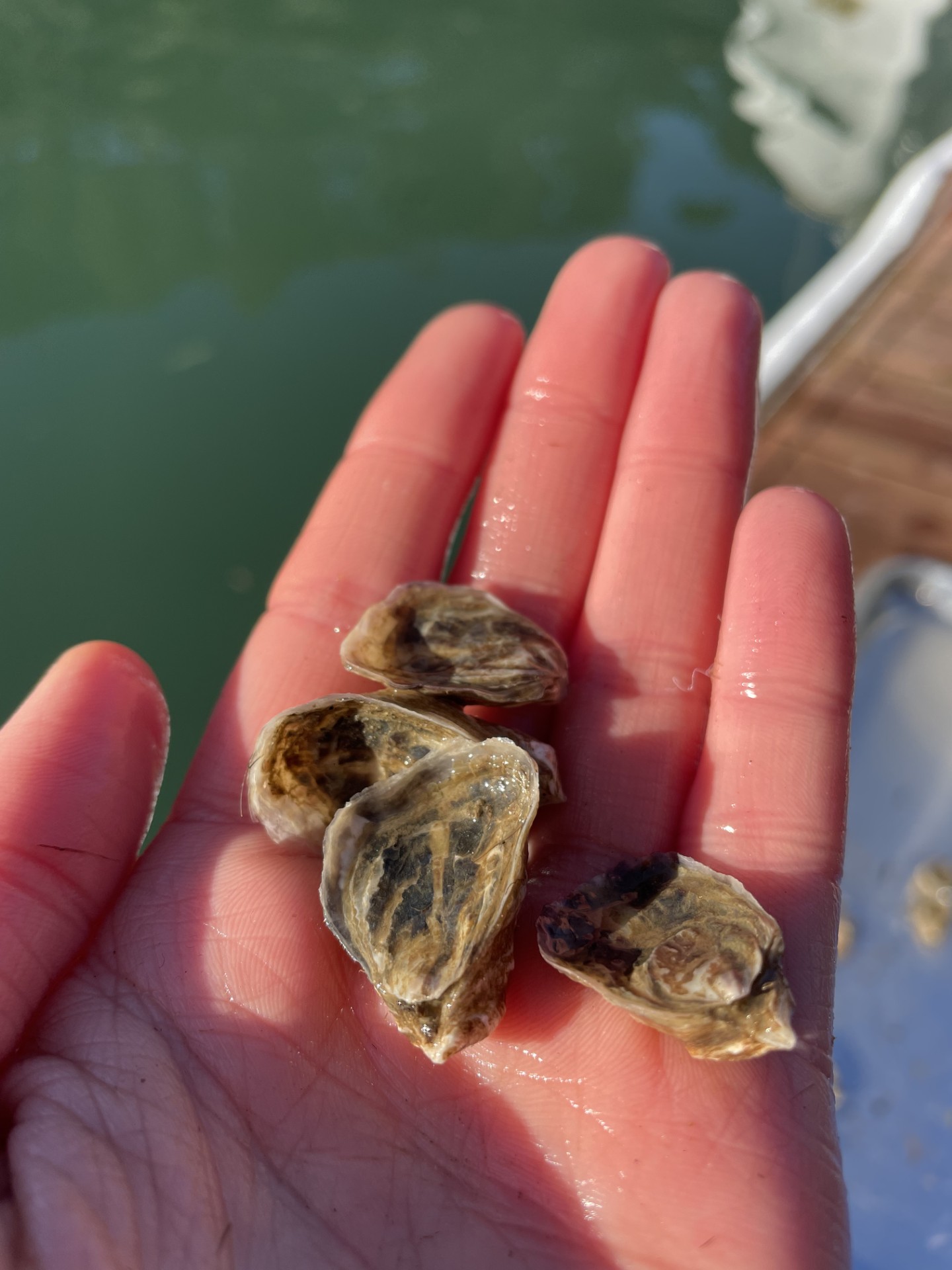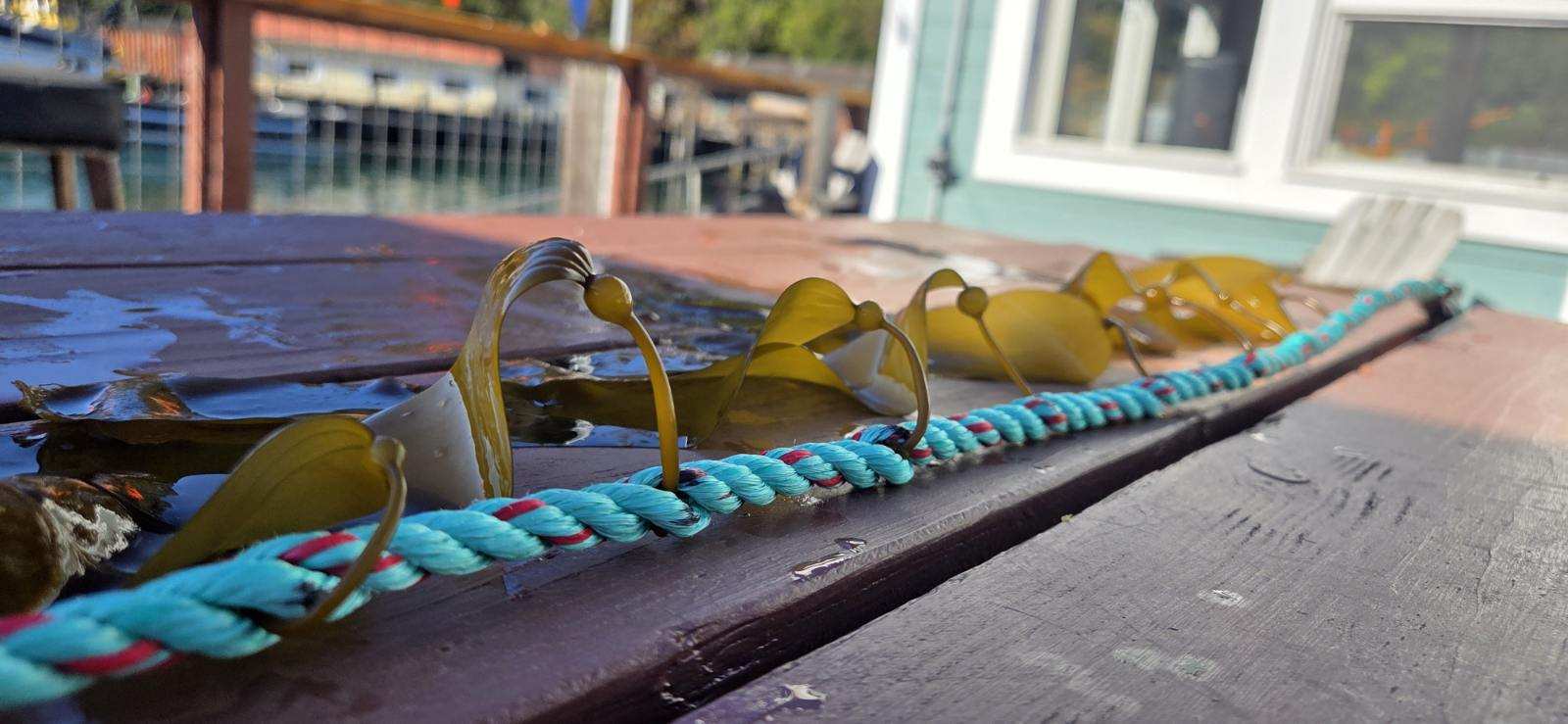About the Aquaculture Feasibility Study
The Aquaculture Feasibility Study is a proof-of-concept analysis to determine whether Pacific oysters, red abalone, purple sea urchin, and bull kelp survive and grow in Noyo Harbor. The study incorporates a water quality analysis and considers future climate impacts on potential aquaculture operations.
We’ve partnered with the Noyo Center for Marine Science to set up and maintain in-water and land-based aquaculture sites at the Noyo Center Marine Field Station. Together, we are monitoring species for health, growth, and survival; collecting data on water quality throughout the harbor; and planning educational outreach events.
The results of this study will be coupled with information on regional restoration and commercial opportunities to determine which types of aquaculture operations are environmentally, economically, and socially feasible for Noyo Harbor and this region.
Why these species?
The Mendocino coast has lost over 95% of its kelp forests due to the compounded effects of warm water conditions and sea star wasting disease. Sunflower sea stars are the main predator of purple sea urchin in our region, and their decline has led to a boom in purple urchin populations. Purple urchins graze on kelp and are outcompeting other species for what little kelp remains. The result is an ecosystem shift from kelp forests to urchin barrens and the closure of culturally significant and economically important fisheries, such as red abalone.
The Aquaculture Feasibility Study includes marine invertebrates and algae, specifically:
- Pacific Oysters (Crassostrea gigas),
- Red Abalone (Haliotis rufescens),
- Purple Sea Urchin (Strongylocentrotus purpuratus),
- Dulse (Palmaria mollis), and
- Bull Kelp (Nereocystis luetkeana).
We’ve selected these five species for either their ecosystem restoration benefits or commercial value (or both!).
Visit our ‘Learn’ tab to learn more about aquaculture and regional blue economy initiatives.
Water Quality Analysis
As part of the Aquaculture Feasibility Study, we are examining water quality for compatibility with species health, growth, and survival. There are sensors in four locations throughout the harbor to monitor changes from the mouth of the river to the mooring basin.
At three of the four locations, we’ve installed AquaTroll 500 Multiparameter Sondes, manufactured by In-Situ, to measure temperature, conductivity, and dissolved oxygen. All three sensors are fixed near the seafloor. This equipment is managed by the Planning Team and Noyo Center for Marine Science, and has provided an opportunity to learn together as a community through hands-on experience. If you are interested in getting involved, please contact us for more information.
At the Noyo Center Marine Field Station, we are working with LakeTech and Aquatic Resources Management to monitor and service two more AquaTroll 500 Multiparameter Sondes. One sensor floats at the surface, while the second sensor is fixed one meter above the seafloor to analyze the selected environmental parameters at different depths. The top sensor measures temperature, conductivity, dissolved oxygen, pH, and chlorophyll-a. The bottom sensor measures temperature, conductivity, dissolved oxygen, and pressure.
All sensors collect real-time data every hour that is uploaded to our website every four hours via telemetry software. To view our water quality data, please visit the public portal at the link below.
